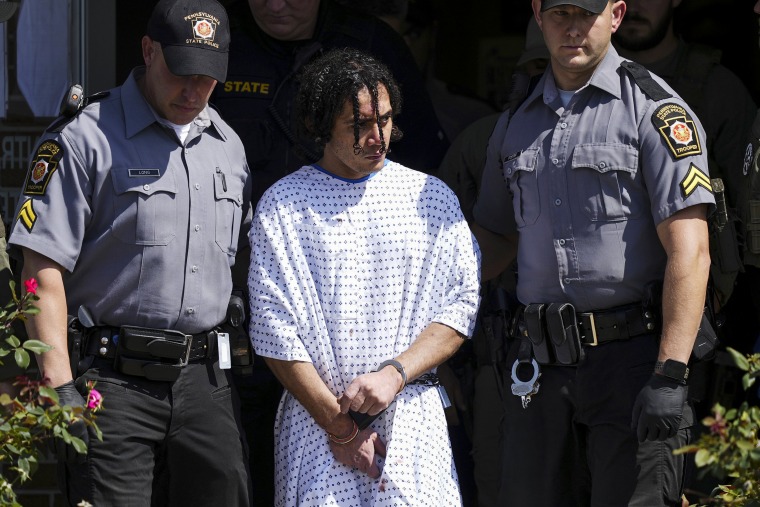On Wednesday, Pennsylvania police announced that murderer Danelo Cavalcante has been captured close to two weeks after he escaped from Chester County Prison. The press conference capped a massive interagency manhunt; the 34-year-old was ultimately spotted using aerial thermal heat technology.
Massive interest in the escape was fueled by prison footage of the moment the fugitive crab-walked up between two brick walls. Cavalcante then climbed over razor wire, ran across the roof and leaped to the ground outside the walls. It wasn’t until prison guards took a headcount that he was discovered missing.
Obviously, the escape raises a lot of questions about Chester County Prison. For example, if the escape was captured on video, why wasn’t anyone watching the video?
Then, it turns out, Cavalcante’s escape wasn’t even as spectacular as we originally thought. Because it’s happened before. According to Howard Holland, acting warden of the prison, inmate Igor Vidra Bolte escaped from the same prison in May by climbing a wall in an exercise yard to get to the roof. So Cavalcante wasn’t even the first inmate to do this; he was just following another inmate’s similar route and strategy. This revelation raises further questions about the facility and why there appears to be an escapee playbook.
As someone who has practiced criminal defense law in the Philadelphia area, and who has had to deal with state correctional facilities, as well as their federal counterpart, the Bureau of Prisons (BOP), I can tell you now what the prison’s answers to these questions will be. Because when things go wrong at a prison, officials generally recycle the same excuses over and over: We are underfunded. We are understaffed. We are overcrowded.
I can tell you now what the prison’s answers to these questions will be.
And whatever investigation follows in Chester County will probably yield some version of that excuse. Some people will get fired (a guard in one of the towers has already lost his job). Maybe someone more important will step down in disgrace. But everyone else will just go back to whatever they were doing. Almost no one wants to talk about correctional facilities — let alone spend more money on them — until it’s too late, and something terrible has happened.

In the winter of 1999, then-Texas Gov. George W. Bush spoke to the Latino Business Association in Los Angeles, using a memorable phrase attributed to his speechwriter Michael Gerson: “Now some say it is unfair to hold disadvantaged children to rigorous standards,” Bush said. “I say it is discrimination to require anything less — the soft bigotry of low expectations.”
Bush was talking about inequalities in academic performance, and whether he was right about race and education is a very different discussion. But his phrase, slightly modified, is useful in understanding our flawed philosophy about correctional systems. For prisons, it’s more like the “ignored hazards of low expectations.”
America has low expectations for correctional facilities. And the corrections system is fine with that.
Not enough beds for inmates at the prison? Hey, it’s prison, it’s not the Ritz Carlton. Jail infested with bedbugs? Officials will look into the problem; maybe a few inmates will get new mattresses. A series of stabbings, like the ones that have plagued the Fulton County Jail recently in Georgia? The Fulton County sheriff said these incidents are “not surprising” to him because of overcrowding and deteriorating facilities. The people in charge of the facility are “not surprised” by stabbings. Which means it falls within expectations — low expectations. .
This is not to say that there aren’t occasionally compassionate, diligent employees at a prison. They exist. But they are that way because they choose to be that way — not because their employer requires them to be that way, or because lawmakers and the public at large are pushing for change.
We have come to expect very little from correctional facilities. The one thing — the only thing — we ask our prisons to do is to keep their residents inside the walls. But when low expectations are part of the culture of prisons, we shouldn’t be surprised when prisons fail and prisoners escape. If prisons allow intolerable conditions generally, it shouldn’t be a huge surprise that their security safeguards can become intolerable too.